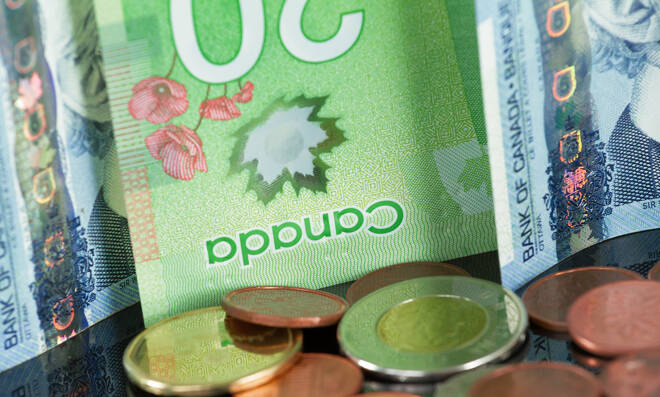Advertisement
Advertisement
USD/CAD: Loonie Hits Five-Week Low on Strong Greenback, Weak Oil Price
By:
“While we are constructive on the USD, we are relatively more bullish on the outlook for the CAD. The Bank of Canada (BoC) is close to winding down completely its asset purchase programme and suggested at its late October policy meeting that interest rates could rise more quickly than it had previously indicated, with inflationary pressures evident,” noted Shaun Osborne, Chief FX Strategist at Scotiabank.
The Canadian dollar hit its lowest level in five weeks against the U.S. counterpart in early trading on Thursday after the greenback rose to its strongest since July 2020 and crude oil prices slid on an unexpected increase in U.S. crude inventory that weighed on the commodity currency.
“Trade-weighted measures of the dollar have pushed up to the highest levels of the year as surging US inflation makes the case for tighter monetary policy. High inflation is now a hot political topic in Washington and presumably, both the Fed and the White House would not mind a stronger dollar right now,” noted Francesco Pesole, FX Strategist at ING.
Today, the USD/CAD rose to 1.2580 up from Wednesday’s close of 1.2489. Still, the Canadian dollar gained about 2.3% last month after depreciating around 0.5% in September.
The dollar index, which measures the value of the dollar against six foreign currencies, was trading 0.17% higher at 95.009. The greenback rose to 16-month highs against most other major currencies because of the hottest U.S. inflation reading in a generation that pushed investors to bet that interest rates are likely to rise sooner than previously thought.
In October, U.S. consumer prices rose faster than expected due to surges in gasoline and food prices, showing that inflation could remain high well into next year amid snarled global supply chains. Labor Department data on Wednesday showed that the consumer price index rose 0.9% last month after rising 0.4% in September. In the 12 months through October, the CPI increased 6.2% up from September’s 5.4% increase.
It is highly likely that the world’s dominant reserve currency, the USD, will rise by end of the year, largely due to the expectation of at least one rate hike next year. With the dollar strengthening and a possibility that the Federal Reserve will raise interest rates earlier than expected, the USD/CAD pair may experience a rise.
“While we are constructive on the USD, we are relatively more bullish on the outlook for the CAD. The Bank of Canada (BoC) is close to winding down completely its asset purchase programme and suggested at its late October policy meeting that interest rates could rise more quickly than it had previously indicated, with inflationary pressures evident,” noted Shaun Osborne, Chief FX Strategist at Scotiabank.
“We expect the BoC to raise rates 100 bps from the second half of next year and a further 100 bps in 2023, taking the overnight target rate to 2.25%. That would sustain a policy rate premium of 75 bps over the Fed’s key target rate through our forecast horizon. However, markets are pricing an earlier start to lift off and nearly 125 bps of tightening next year, which implies a policy rate spread of 100 bps—very wide by recent, historical standards.”
Canada is the world’s fourth-largest exporter of oil, which edged lower on an unexpected increase in U.S. crude inventory. At the time of writing, U.S. West Texas Intermediate (WTI) crude was trading 0.89% lower at $80.62 a barrel. Lower oil prices lead to lower U.S. dollar earnings for Canadian exporters, resulting in a decreased value of the loonie.
About the Author
Vivek Kumarauthor
Vivek has over five years of experience in working for the financial market as a strategist and economist.
Advertisement
